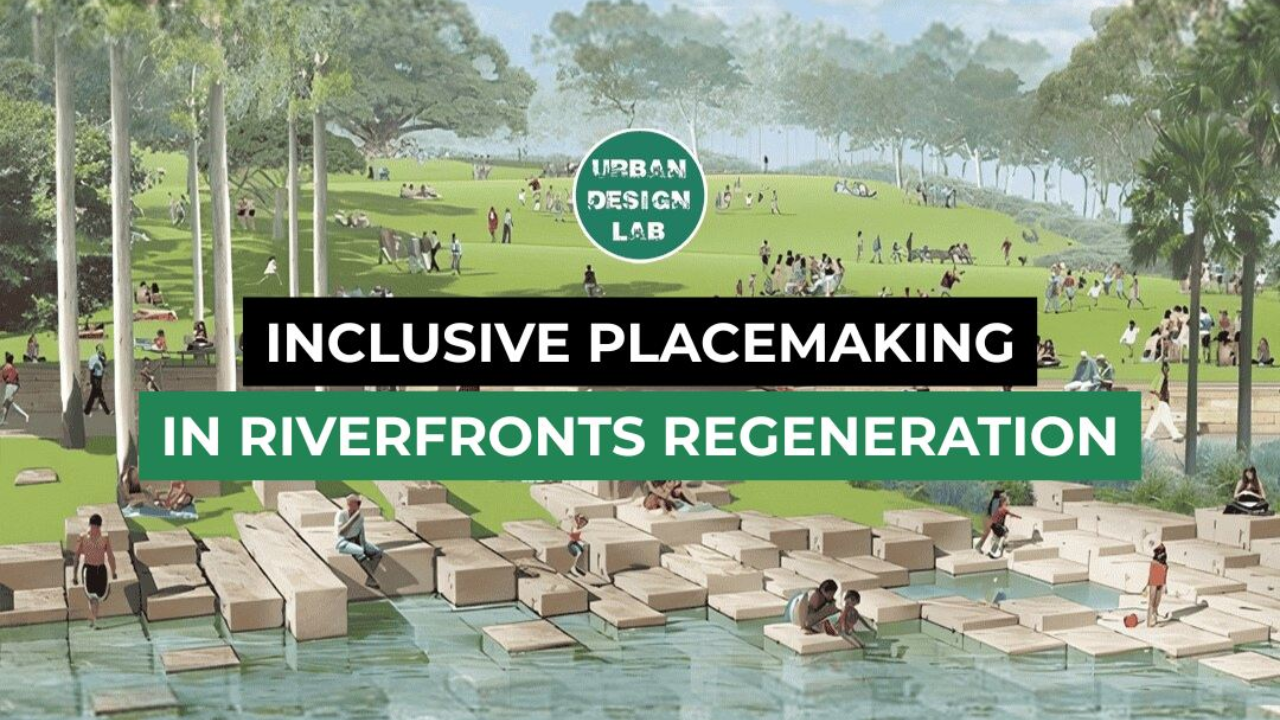
Introduction
Inclusive design in urban regeneration goes beyond aesthetics—it ensures that cities are rebuilt in ways that are accessible, equitable, and culturally relevant to all residents. This approach integrates diverse community needs into planning, creating environments that serve people of all ages, abilities, and backgrounds. Several global cities have demonstrated how inclusive design can revitalize economies, rebuild social trust, and create vibrant, sustainable spaces.
What Makes Inclusive Design in Urban Regeneration Successful
The core principles behind successful inclusive regeneration include:
- Accessibility for All – Infrastructure designed for people with disabilities, the elderly, and children.
- Community Participation – Residents co-create spaces to ensure relevance and acceptance.
- Cultural Sensitivity – Honoring local traditions and histories in the built environment.
- Multi-Functional Spaces – Areas that combine recreation, commerce, and cultural activities.
- Affordability and Social Equity – Ensuring regeneration benefits existing residents, not just newcomers.
Case Study 1: Medellín, Colombia – From Stigma to Global Model
Background: Medellín was once plagued by high crime rates, poverty, and social exclusion, particularly in hillside neighborhoods disconnected from the city’s core.
Inclusive Design Strategy:
- Built cable car systems to connect remote communities to the city center.
- Introduced library parks as cultural and educational hubs.
- Designed public escalators in steep neighborhoods to improve mobility.
Impact:
- Reduced travel times from hours to minutes.
- Increased community engagement in public spaces.
- Attracted international recognition and tourism.
Case Study 2: Rotterdam, Netherlands – Human-Centered Waterfront Revival
Background: Rotterdam’s industrial waterfront had declined, leaving underused spaces and fragmented neighborhoods.
Inclusive Design Strategy:
- Created pedestrian-friendly promenades and cycle paths.
- Integrated mixed-income housing in waterfront developments.
- Restored wetlands to improve flood resilience while creating recreational areas.
Impact:
- Revitalized local economy through tourism and small businesses.
- Strengthened flood protection in a climate-vulnerable area.
- Enhanced inclusivity by blending social housing with market-rate homes.
Case Study 3: Seoul, South Korea – Cheonggyecheon Stream Restoration
Background: A central river buried under a highway for decades left downtown Seoul with pollution, noise, and poor livability.
Inclusive Design Strategy:
- Removed the elevated highway and restored the natural stream.
- Added accessible walkways, ramps, and cultural event spaces.
- Created green corridors for cooling and biodiversity.
Impact:
- Lowered urban temperatures by up to 3°C in the area.
- Increased pedestrian traffic and business activity.
- Made the space usable for all, including wheelchair users and families.
Case Study 4: Barcelona, Spain – Superblocks for Community Life
Background: Heavy traffic and pollution made many Barcelona neighborhoods unsafe and unpleasant for pedestrians.
Inclusive Design Strategy:
- Implemented “superblocks”—clusters of streets where cars are restricted.
- Expanded sidewalks, playgrounds, and shaded seating areas.
- Created spaces for markets, cultural events, and social gatherings.
Impact:
- Reduced air and noise pollution.
- Encouraged walking, cycling, and social interaction.
- Boosted neighborhood identity and resident satisfaction.
Benefits of Inclusive Design in Regeneration
| Benefit Area | Key Impact | Example from Case Studies |
|---|---|---|
| Accessibility | Improves mobility for all | Medellín’s cable cars & escalators |
| Economic Growth | Attracts investment & tourism | Rotterdam’s waterfront revival |
| Social Cohesion | Encourages interaction & trust | Barcelona’s superblocks |
| Environmental Health | Restores ecosystems | Seoul’s stream restoration |
| Cultural Identity | Strengthens local heritage | Medellín’s library parks |
| Climate Resilience | Adapts to environmental risks | Rotterdam’s flood-proofing |
Challenges Faced in Implementation
- Balancing Interests: Aligning developers’ goals with community needs can be difficult.
- Funding and Maintenance: Sustaining inclusive features over the long term requires reliable resources.
- Preventing Displacement: Gentrification risks must be mitigated with affordability policies.
- Complex Coordination: Multiple agencies and stakeholders must collaborate effectively.
Strategies for Future Projects
- Early Community Involvement: Include residents from the concept stage to build trust.
- Universal Design Standards: Apply accessibility guidelines to all public infrastructure.
- Green-Blue Integration: Combine ecological restoration with urban usability.
- Flexible Use of Space: Design areas that can adapt to changing community needs.
- Policy Support: Ensure local regulations promote inclusivity and affordability.
Overview Table
| City | Key Intervention | Main Benefit | Notable Inclusive Feature |
|---|---|---|---|
| Medellín | Cable cars, library parks | Social inclusion & mobility | Accessible hillside transport |
| Rotterdam | Waterfront redesign | Economic and environmental gains | Mixed-income housing |
| Seoul | Stream restoration | Environmental & social benefits | Universal access walkways |
| Barcelona | Superblocks | Reduced pollution, increased livability | Pedestrian-first spaces |
Conclusion
These case studies demonstrate that inclusive design is a powerful driver of urban regeneration. Whether it’s connecting marginalized communities, reimagining industrial spaces, restoring natural ecosystems, or reclaiming streets for people, the results are transformative. Cities that prioritize accessibility, equity, and cultural identity not only rebuild physical spaces but also repair the social fabric, making them healthier, more resilient, and more united
3 Quick FAQs
Q1: What is the biggest advantage of inclusive design in regeneration?
A: It ensures that redevelopment benefits everyone, especially marginalized groups, creating lasting social and economic improvements.
Q2: Can inclusive design be applied to small towns?
A: Yes—its principles can scale down to any community looking to improve accessibility and engagement.
Q3: Does inclusive design slow down regeneration projects?
A: It can take more time initially due to community engagement, but it produces more sustainable and widely accepted outcomes.

